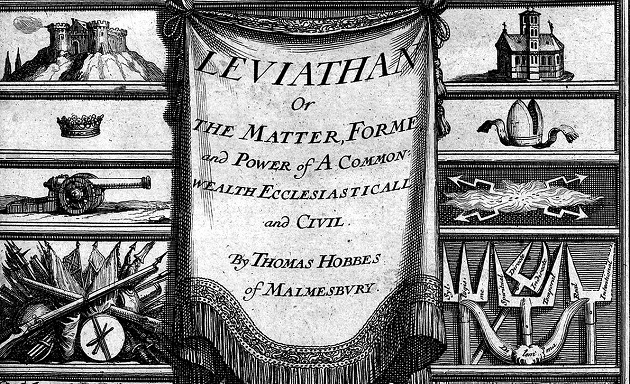We need a deeper understanding which transcends the distorted reflections of ourselves that we find in our own technology.
![Image: [link]Tech Human[/link], CC0.](https://cms.evangelicalfocus.com/upload/imagenes/5f59f75076f13_tech940.jpg) Image: [link]Tech Human[/link], CC0.
Image: [link]Tech Human[/link], CC0.
Human beings have always tried to understand themselves by comparison with the leading technologies of the time.
For many centuries of the medieval period and beyond precision clockwork mechanisms represented the pinnacle of technological creation, and it seemed obvious to many thinkers that the human body must represent some kind of clockwork mechanism.
Descartes in his 17th century Treatise on Man wrote “I make the supposition that the body is nothing else but a statue or earthen machine, that God has willed to form entire…..We see clocks, artificial fountains, mills, and other similar machines, which, being only made by men, nevertheless do not lack the force to move themselves in several diverse means. And it seems to me that as it is made by the hand of God I can not imagine how many kinds of movements there are in it…”
Descartes concluded that all our bodily functions followed “from the mere arrangement of the machine’s organs every bit as naturally as the movements of a clock or other automaton follow from the arrangement of its counter weights and wheels”.
Throughout his treatise, published posthumously, Descartes refers to his own human body as “this machine”, contributing to a strange sense of estrangement from the realities of bodily existence.
The 18th century philosopher Denis Diderot also drew out the machine metaphor. “Consider man as a walking clock, his heart is the mainspring, the contents of the thorax are the principle parts of the works, in his head are the bells, complete with little hammers…and the soul is the tiny figure on the top listening to the music of the chimes”.
In his controversial book “L’Homme machine” (the human machine), published in 1743, the atheist philosopher Julien de La Mettrie wrote “The human body is a machine which winds its own springs. It is the living image of perpetual movement.”
With the rise of steam power and new forms of hydraulic technology, clockwork metaphors increasingly give way to hydraulic imagery. The human body is now conceived as a system of tubes and chambers filled with incompressible fluids.
It has often been pointed out that Freud’s model of human psychology is based on hydraulics, with libido conceived as an incompressible fluid, channelled within the subterranean tubes of the mind.
Just as a steam engine might explode if excessive pressure was not safely released, so the human psyche was at risk of excessive libidinous forces with potentially destructive consequences (!)
In the mid-1800s, inspired by recent advances in communications, the German physicist Hermann von Helmholtz moved beyond hydraulics and suggested that the brain was a telegraphic system. In the telegraph, as in the nervous system, what produced meaning was not the signals themselves but the receiving apparatus.
"In the network of telegraphs", he wrote, "we find everywhere the same copper or iron wires carrying the same kind of movement, a stream of electricity, but producing the most different results in the various stations according to the auxiliary apparatus with which they are connected."
Here in the first half of the 21st century, it is information technology and machine intelligence, that have become the most advanced forms of human ingenuity available to us, so we should not be surprised that humans are being increasingly seen as ‘information processing machines’.
“The brain happens to be a meat machine” stated Marvin Minsky, the robotics pioneer. To philosopher Daniel Dennett, ‘we’re robots made of robots made of robots. We’re incredibly complex, trillions of moving parts.
But they’re all non-miraculous robotic parts.’ In his book Life 3.0, physicist Max Tegmark concludes that human life can be seen as a ‘self-replicating information processing system’.

[photo_footer] 'Leviathan', by Thomas Hobbes[/photo_footer] Back in the 17th century Thomas Hobbes, in his master work Leviathan, was probably the first to draw a direct comparison between thinking and computation. “For ‘reason’ ….is nothing but ‘reckoning,’ that is adding and subtracting, of the consequences of general names agreed upon for the ‘marking’ and ‘signifying’ of our thoughts.”
It took several centuries for this comparison to come to prominence, but psychologist Steven Pinker points to the significance of Hobbes’ initial idea. “Thomas Hobbes’s pithy equation of reasoning as “nothing but reckoning” is one of the great ideas in human history..... The cognitive feats of the brain can be explained in physical terms: To put it crudely (and critics notwithstanding), we can say that beliefs are a kind of information, thinking a kind of computation, and motivation a kind of feedback and control. This is a great idea because it completes a naturalistic understanding of the universe, exorcising occult souls, spirits, and ghosts in the machine. Just as Darwin made it possible for a thoughtful observer of the natural world to do without creationism, Turing and others made it possible for a thoughtful observer of the cognitive world to do without spiritualism.’”
Pinker points to the attraction of the computer metaphor for moderns who are wedded to a purely materialistic understanding of the universe. We don’t need to worry that there might be something non-material or spiritual, some kind of transcendent purpose or meaning, which is hidden behind the miracle of our humanity. We can relax and enjoy ourselves. We are just information-processing machines.
This way of thinking has become so pervasive that it is almost invisible. We talk of human beings as ‘hard-wired’, ‘suffering from information overload’, ‘programmed for failure’, ‘needing a reboot.’ It is commonplace to take the computer concepts of software and hardware and apply them to our own humanity.
Our hardware (often dismissively referred to as wetware) is the physical stuff of our brains – nerve cells, connections, neurotransmitter chemicals. Our software is the information that somehow resides in our brains – memories, perceptions, emotions, thoughts.
Max Tegmark claims that “intelligence is ultimately about information and computation, not about flesh, blood or carbon atoms. This means that there’s no fundamental reason why machines can’t one day be at least as intelligent as us.”

[photo_footer] Excerpt of The Creation, by J. Haydn [/photo_footer] The hardware/information distinction is deeply rooted in the age of information technology. One of the central ideas is that information is not tied to hardware and can be instantiated (turned into a physical reality) in many different physical forms.
Take the digital file of a piece of music. It is viewed as pure information, a series of ones and zeros which exist in a virtual information space. The ones and zeros exist in the cloud (although in reality they are stored in digital memory in a vast server farm somewhere on the planet).
The information can be extracted and instantiated in many different forms – streamed to a computer, attached to a social media post, turned into a physical CD or even converted into a vinyl record. But the music remains the same.
The physical instantiation seems of secondary importance – it is the non-physical information which holds the essence of the music.
It’s not surprising that some modern technologists, such as Ray Kurzweil, have taken the same idea and applied it to the human body and brain. The important thing about me is not the wetware of my physical instantiation, it is the software, the pure information which can be extracted from my brain and uploaded as ones and zeros into the cloud.
It’s a strange new materialist version of Plato’s ancient philosophy, and it is profoundly dualistic. It draws a rigid conceptual distinction between the physical stuff of my body and the disembodied information which in many ways comes to represent the real me.
Of course, there is a certain truth behind the idea that the brain can be viewed as a machine made out of meat. There are certain aspects of our human functioning that can usefully be seen as similar to that of a machine.
In other words the machine is a useful metaphor for certain aspects of our humanity. The machine metaphor has been extremely successful in fields such as human physiology, molecular biology, genetics, cognitive neuropsychology, and so on.
But there is a critical difference between a helpful metaphor, and a definition, a description of core reality. Yes it may be helpful to say that a human being is like a computer, but to say that a human being is a computer is incoherent, it is philosophical nonsense.
It makes sense to say that a fish is a bit like a submarine. It has a propulsion unit, a central guidance system and sensors equipped for an underwater environment. But to claim that a fish is a submarine doesn’t make sense. Yet this confusion between a metaphor and a definition seems commonplace.
The ‘information processing machine’ is becoming a dominant paradigm by which we understand our own humanity. But it is much more profound and subtle than just a confused way of thinking; it becomes a way of perceiving.
Technology brings its own ‘reality distortion field’ – it changes the way we see the world and our own human nature. As has often been said ‘to the person with a hammer, the whole world looks like a nail.’ So to a coder with an algorithm, people are just data.
In a future article I will aim to discuss some more of the wide-reaching implications of this way of thinking. But for now I would like to draw attention to a deep connection between this way of perceiving ourselves and the biblical understanding of idolatry.
To take a machine, a product of human creativity and engineering skill, and then use that human creation as a way of comprehending and controlling our own humanity is a modern parallel of the work of the ancient idol-maker lampooned by the prophet Isaiah:
“The carpenter measures with a line
and makes an outline with a marker;
he roughs it out with chisels
and marks it with compasses.
He shapes it in human form,
human form in all its glory,
that it may dwell in a shrine…..
Half of the wood he burns in the fire;
over it he prepares his meal…
From the rest he makes a god, his idol;
he bows down to it and worships.
He prays to it and says,
“Save me! You are my god!”
Isaiah 44:13-17
The attempt to comprehend our own humanity by using the tools that human beings have created is doomed to futility and incoherence. We need a deeper understanding which transcends the distorted reflections of ourselves that we find in our own technology.
The challenge for those of us who uphold the historic Christian faith is how to articulate and defend a Christian way of understanding of what it means to be human in the face of these mechanistic challenges.
In place of the dualism of the information age we need to hold on to the deep unity of the embodied human person which is a central theme of biblical theology and which is reflected most profoundly and mysteriously in the miracle of the Incarnation.
Yes, we are embedded in physical materiality with all its machine-like characteristics, but we are also persons, unitary, mysterious and unique reflections of the Godhead, human persons in which the material and the non-material are ineradicably conjoined.
We are persons created for the exploration and fulfilment of the cosmos and for union and communion with one another and with our Creator. It’s a higher calling than any information processing system…
John Wyatt is Emeritus Professor of Neonatal Paediatrics, Ethics & Perinatology at University College London, and a senior researcher at the Faraday Institute for Science and Religion, Cambridge.
This article was first published on TechHuman.org and has been re-published with permission.

Las opiniones vertidas por nuestros colaboradores se realizan a nivel personal, pudiendo coincidir o no con la postura de la dirección de Protestante Digital.
Si quieres comentar o